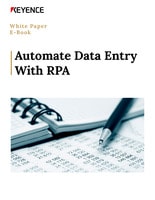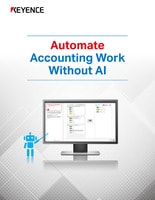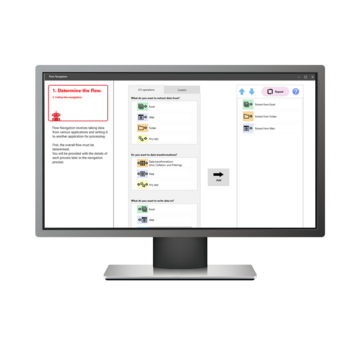RPA (Robotic Process Automation)
IT Department Automation with RPA

The IT department is the backbone of any organization, ensuring that systems run smoothly, data is secure, and applications function as expected. However, the complexity and constant demand for updates, patches, and system monitoring can overwhelm IT staff. Robotic Process Automation (RPA) offers a solution by automating many repetitive and time-consuming IT tasks, freeing up valuable resources for more strategic work.
RPA enables IT departments to automate tasks such as software deployment, system monitoring, data management, user access control, and compliance reporting. By implementing RPA, IT teams can increase operational efficiency, reduce human error, and improve service delivery across the organization.
Discover more about this product.
Click here to book your demo.

Common IT Challenges
Manual System Monitoring
Monitoring IT systems, network health, and application performance requires constant vigilance. Manual checks are time-consuming and often prone to oversight. RPA scenarios can automate system health checks, log monitoring, and alert IT staff when issues arise, allowing them to proactively address problems before they impact users.
Time-Consuming Data Management
IT departments handle large volumes of data, including backups, database updates, and migrations. These tasks often require significant manual intervention and can lead to delays and errors. RPA can automate data transfers, backups, and database management, ensuring that data is handled accurately and efficiently.
Software Installation and Updates
Managing software deployments, patches, and updates is a critical yet repetitive task for IT teams. RPA scenarios can automatically deploy software updates, perform patch management, and ensure that all systems are running the latest versions, reducing the time IT staff spends on routine maintenance.
Compliance and Security Reporting
Compliance reporting and security audits are essential for ensuring that systems meet regulatory requirements. However, manual reporting can be time-consuming and prone to human error. RPA can automate the generation of compliance reports, track security logs, and ensure that IT systems are continuously aligned with industry regulations.
Benefits of RPA for IT Departments
- Increased Operational Efficiency: Automating routine IT tasks frees up IT professionals to focus on higher-value activities such as strategic planning, security improvements, and innovation.
- Improved Accuracy and Reliability: RPA reduces human error in manual processes such as data entry, system updates, and security checks, leading to more reliable IT operations.
- Faster Response Times: By automating issue detection, system monitoring, and troubleshooting, RPA helps IT departments respond more quickly to problems and prevent downtime.
- Cost Savings: Automating manual IT tasks reduces the need for additional staffing and minimizes the potential for costly errors or system failures.
- Enhanced Compliance and Security: RPA helps IT departments maintain compliance with industry regulations by automating reporting and ensuring that security measures are continuously met.
Key RPA Use Cases for IT
- System Monitoring and Issue Resolution: RPA scenarios can monitor server performance, system logs, and network activity, alerting IT teams to issues that need attention. Scenarios can even trigger pre-defined actions to resolve common issues without manual intervention.
- Software Deployment and Patch Management: RPA can automate the deployment of new software versions, patches, and updates to ensure systems are always up-to-date and secure.
- Data Migration and Integration: RPA simplifies data migration by automating the extraction, transformation, and loading (ETL) processes. It ensures that data is accurately transferred between systems with minimal downtime.
- User Access and Identity Management: RPA can automate the process of onboarding new employees, granting access to required applications and systems. It can also ensure that user access is properly managed and revoked when employees leave the company.
- Compliance Reporting and Auditing: RPA can automate the collection and generation of compliance reports, reducing the manual effort involved in tracking regulatory requirements and security audits.
Integrating RPA into IT Operations
RPA can be seamlessly integrated with existing IT systems such as:
- Enterprise Resource Planning (ERP) Systems
- Customer Relationship Management (CRM) Systems
- Network and Server Monitoring Tools
- Database Management Systems (DBMS)
- Identity and Access Management (IAM) Solutions
Integrating RPA with these tools ensures that data flows smoothly between systems and that tasks like system monitoring, software updates, and compliance reporting are automated across the IT environment. This approach is especially valuable in manufacturing environments, where operational efficiency and system reliability are critical to success.
Who Benefits the Most?
- IT Managers: Automate routine tasks like system monitoring, patch management, and data migration to improve efficiency and reduce manual workload.
- System Administrators: Automate repetitive tasks such as software deployment, access management, and log monitoring to enhance system performance and security.
- Security and Compliance Teams: Use RPA to ensure that systems remain secure and compliant with regulatory standards by automating security checks and compliance reporting.
By adopting RPA, IT departments can streamline their operations, improve accuracy, and increase the overall performance of their systems. RPA helps IT teams focus on innovation and critical thinking, rather than getting bogged down by repetitive tasks.
FAQs
How Does RPA Help With System Monitoring?
RPA automates the monitoring of IT systems, including servers and networks, by checking for performance issues, monitoring logs, and alerting IT staff when something goes wrong. This helps IT teams respond proactively to problems before they affect operations.
Can RPA Automate Software Updates and Patch Management?
Yes, RPA can automatically deploy software updates and patches across systems, ensuring that applications are always up-to-date with the latest versions, security patches, and fixes.
How Does RPA Support Compliance Reporting?
RPA can automate the generation of compliance reports by collecting necessary data from various systems and formatting it according to regulatory requirements, making it easier to stay compliant with industry standards.
We’re here to provide you with more details.
Reach out today!

Related Downloads
Related Products
Scroll




